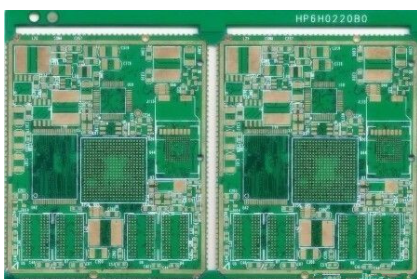How to deal with the blackening of the inner layer of the PCB multi-layer board
For circuit board manufacturers, if the PCB multilayer board is a multilayer board, the inner layer blackening is a very difficult problem, so how to blacken it? What is the effect of blackening?
The effect of blackening: passivate the copper surface; enhance the surface roughness of the inner layer of copper foil, thereby enhancing the bonding force between the epoxy resin board and the inner layer of copper foil;
tear strength peelstrength
Black oxidation method for general inner layer treatment of PCB multilayer board:
PCB multilayer board black oxidation treatment
PCB multilayer board brown oxidation method
PCB multilayer board low temperature blackening method
PCB multilayer board adopts high temperature blackening method, the inner layer board will produce high temperature stress (thermalstress) which may cause the layer separation after lamination or the crack of the inner layer copper foil;
1. Brown oxidation:
The product of black oxidation treatment of PCB multi-layer circuit boards of circuit board manufacturers is mainly copper oxide, there is no so-called cuprous oxide. This is some wrong argument in the industry. After ESCA (electrospecific chemical analysis) analysis, it can be determined
The binding energy between copper atoms and oxygen atoms, the ratio between copper atoms and oxygen atoms on the surface of the oxide; clear data and observation analysis prove that the product of blackening is copper oxide, and there are no other components;

The general composition of blackening liquid:
oxidant sodium chlorite
PH buffer trisodium phosphate
sodium hydroxide
Surfactant
or basic copper carbonate ammonia solution (25% ammonia water)
2. Related data
1. Peelstrength 1oz copper foil is at a speed of 2mm/min, the width of the copper foil is 1/8 inch, and the tensile force should be more than 5 pounds/inch.
2, the weight of oxide (oxideweight); it can be measured by gravimetric method, generally controlled at 0.2---0.5mg/cm2.
3. The significant factors that affect the tear strength through the related variable analysis (ANDVA: the analysis of variable) mainly include:
1. The concentration of sodium hydroxide
2. The concentration of sodium chlorite
3. The interaction between trisodium phosphate and immersion time
4. The interaction between sodium chlorite and trisodium phosphate concentration
"Tear strength depends on the filling of the resin to the oxide crystal structure, so it is also related to the relevant parameters of the lamination and the performance of the resin pp.
The length of the needle-like crystals of the oxide is 0.05mil (1-1.5um) as the best, and the tear strength at this time is also relatively large;